Lifestyle
Streaming in March 2025: ‘Moana 2,’ John Mulaney and Amanda Seyfried

“Moana 2,” the third-biggest movie box-office hit of 2024, and Amanda Seyfried playing a Philadelphia patrol officer fighting rampant opioid addiction in Peacock’s “Long Bright River” are some of the new television, films, music and games headed to a device near you.
Also among the streaming offerings worth your time as selected by The Associated Press’ entertainment journalists: A long-lost documentary resurfaces on Tom Petty, comedian John Mulaney launches a live weekly celebrity talk show on Netflix and a six-part series called “Confessions of Octomom” looks back at the turbulent life of single mom Nadya Suleman.
NEW MOVIES TO STREAM MARCH 10-16
– “Moana 2” was nearly a streaming series. Instead, it arrives Wednesday on Disney+ after more than $1 billion in worldwide ticket sales. The movie, the third-biggest box-office hit of 2024, is set three years after the 2016 original. Moana (Auli’i Cravalho) again sets sail from her home island, this time in search of a wider community of Pacific Islanders. Dwayne Johnson, as the voice of Maui, is also back. In my review, I wrote that “the warm Polynesian spirit and open-sea sense of adventure is back in ‘Moana 2,’ but little of the original’s humor or catchy songs finds its way into this heartfelt but lackluster sequel.”
— Directors Anthony and Joe Russo (“Avengers: Endgame”) are back on Netflix with their adaptation of Simon Stalenhag’s 2018 illustrated novel “The Electric State.” The Russos, who last released 2022’s “The Gray Man” on the streaming service, bring their big-budget flare to a retro-futuristic tale populated by cartoon-like robots. Millie Bobby Brown stars as a teenager in search of her long-lost brother, who travels the American southwest with Keats (Chris Pratt) and his robot sidekick, Herman (voiced by Anthony Mackie).
– Payal Kapadia’s luminous “All We Imagine as Light” begins streaming on the Criterion Channel. The film, one of the most acclaimed of 2024, is about three Mumbai hospital workers — played by Kani Kusruti, Divya Prabha and Chhaya Kadam — who are each grappling with different constrictions in modern Mumbai. When they travel to a seaside town, “All We Imagine as Light” transforms into a radiant, illusary imagination of the lives they could have. In her review, AP Film Writer Lindsey Bahr wrote, “Like a dream, this is a film that washes over you.”
— AP Film Writer Jake Coyle
NEW MUSIC TO STREAM MARCH 10-16
— In 2022, the K-pop girl group LE SSERAFIM emerged fully-formed: An ambitious Gen Z quintet whose hooks who helped usher in a new wave of such groups. It was their single “ANTIFRAGILE” that seemed to suggest a new sound was being popularized: They pulled from reggaetón filtered through Rosalía as much as they did the tentpoles of much K-pop: stacked melodies, R&B, hip-hop, EDM. On Friday, they will release a new EP, “HOT,” its title-track promising further combinations of “rock and disco elements, revolving around love,” their agency Source Music said in a statement. It’s enough to get excited about.
— In February 1983, “Tom Petty: Heartbreakers Beach Party” aired just once on MTV — a long-lost documentary that doubles as Cameron Crowe’s true directorial debut. It follows Petty and his Heartbreakers around their 1982 “Long After Dark” album. The film has been found and remastered, and on Tuesday, will premiere on Paramount+.
— AP Music Writer Maria Sherman
NEW SHOWS TO STREAM MARCH 10-16
— In 2009, the world was introduced to Nadya Suleman, a single mom of six who gave birth to eight living children at one time via in vitro fertilization. The public fascination into this woman dubbed Octomom quickly became vicious and judgmental. Suleman had no job and relied on government assistance, so she was declared irresponsible and unfit to raise 14 kids. She did capitalize on the attention with a book deal, tabloid deals and paid TV appearances but within a few years she’d declared bankruptcy, turned to pornography to earn money and was accused of welfare fraud by the state of California. A new six-part series called “Confessions of Octomom” looks back at that turbulent time and how Suleman and her 14 kids made it through. It debuts Wednesday on Lifetime and streams on Hulu live.
— Comedian John Mulaney launches a live weekly celebrity talk show on Netflix called “Everybody’s Live with John Mulaney” on Wednesday. It’s a follow-up to “John Mulaney Presents: Everybody’s in LA” a live nightly show during last year’s Netflix is a Joke comedy festival. Richard Kind returns as the sidekick. At a press event earlier this year to promote Netflix’s 2025 programming, Maloney promised, “We will never be relevant. We will never be your source of news. We will always be reckless.”
— Amanda Seyfried, who won an Emmy Award in 2022 for portraying former Silicon Valley It Girl, Elizabeth Holmes, stars in a new thriller series for Peacock. In “Long Bright River,” Seyfried plays Mickey, a Philadelphia patrol officer in a neighborhood plagued by rampant opioid addiction. Mickey becomes determined to solve a series of murders when her sister, who is also an addict, goes missing. It’s based on a novel by Liz Moore. The eight-episode series launches Thursday.
— A different limited series for Apple TV+ called “Dope Thief” is also set in Philadelphia against the world of drugs. Brian Tyree Henry and Wagner Moura star as two longtime friends who pose as DEA agents and conduct fake raids to take possession of other people’s drugs and money. It’s a series of easy scores until the two men target the wrong people. “Dope Thief,” produced by Ridley Scott, begins streaming Friday, March 14.
— Alicia Rancilio
NEW VIDEO GAMES TO PLAY
— Video games love to make you feel like a hero, but what happens to warriors who fail? Alta, the protagonist of Wanderstop, takes a job managing a quiet tea shop in a magical forest. That sounds like the setup for a relaxing, “cozy” game like Animal Crossing or Stardew Valley — but be warned, one of its creators is Davey Wreden, the mastermind behind 2013’s The Stanley Parable. That cult classic is one of the most devious brain-twisters ever, so who knows what Wreden and his colleagues at Ivy Road have up their sleeves for their indie studio’s debut release? Judging from the trailer, Alta may have more on her mind than creating the perfect cup. Find out what’s brewing Tuesday on PlayStation 5, Xbox X/S and PC.
— Lou Kesten
Lifestyle
Cooling gadgets and wearables can help you beat the heat
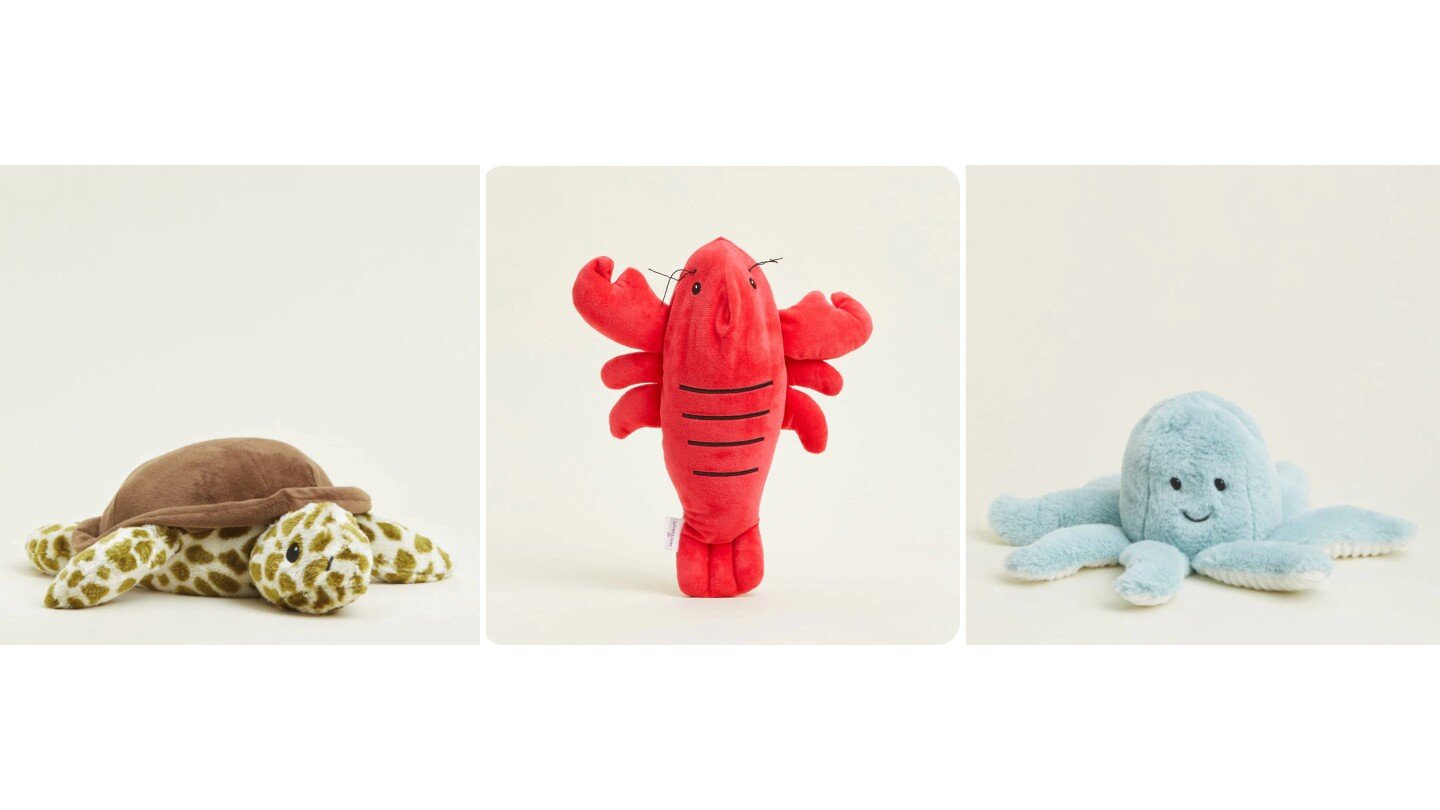
You can only sit in front of the fridge with the door open for so long.
As heat waves blast the world like a blow dryer on high, folks are reaching for anything that promises a little personal chill: portable mini fans, cooling neck wraps, high-tech vests and all kinds of heat-beating headwear.
Of course, cooling gear helps most when paired with basic and safe strategies against the heat: most importantly hydration, shade and rest. Stay out of extreme heat when possible, and know the signs of heat exhaustion or heat stroke.
Yet these wearable wonders and breezy gadgets can offer some relief. They might look quirky, but when the AC struggles and the sidewalk feels like a stovetop, they can start to seem like must-haves.
When you’re at home
Indoors, stay comfy with cool-feel sheets (like those with a silky finish or lightweight fibers), bed fans (where a nozzle inserted into the bed linens pumps a flow of air around you), or a cooling pillow or chill pad, which are filled with a gel that can stay cool for hours. Sleep-product brands include Serta, Sealy, Casper, Pluto and Threshold.
The chill pads can work for your own bed and the pets’ bed too. There are chillable full-size mattresses (Chilipad, 8Sleep and BedJet get good reviews from The Spruce) and smaller, simple pads (CoolCare and Sharper Image, among others).
Outdoor wearables
Clare Epstein, an employee safety expert with Vector Solutions in Tampa, Florida, works to reduce heat stress for at-risk employees in industries like construction, aviation and agriculture. She recommends wearables like cooling scarves and evaporative cooling vests.
“By soaking the fabric in cold water at the beginning of the day, the vest slowly cools, and keeps the wearer cool,” she says.
Clothes made of “phase change materials,” or PCMs, contain gel capsules or pads that can help moderate body temperatures. Uline.com advertises a vest that stays under 60 degrees for a few hours, and AlphaCool offers a neck tube that performs similarly. Another feature of the tube, which is made of a polymer material, is that it doesn’t get overly chilled, so it’s safe for kids to use.
Also for kids, there’s a line of plush toys from Warmies that includes little critters of the farmyard, ocean, forest and safari that can be popped in the freezer before a trip to the park or playground.
Wearable items that incorporate small fans or thermoelectric coolers are also good, Epstein says. And there are vests with tubed reservoirs you can fill with water or electrolytes so you can sip as you go.
“These encourage people to take more water breaks, and stay hydrated,” says Epstein.
The wearables range is extensive. Along with cooling buffs, headbands, wristbands, socks and scarves, there are cooling brimmed hats and ball caps. Brands include Mission, Ergodyne, and Sunday Afternoon.
If you’d prefer a refreshing breeze, USB-chargeable handheld or wearable fans might do the job.
Chill advice
Lynn Campbell, co-founder of 10Adventures travel company in Calgary, Alberta, takes a lot of strenuous hiking and cycling trips with her husband, Richard. They’ve developed some easy hacks for hot days.
“We’ll wake up early, so we’re done by 10 or 11 a.m., or if we’re out on the trails, split the day in two, so we rest by water or in the shade over the hottest part” of the day, she says.
Wear light colors and thin, breathable fabrics.
And bring an umbrella. “This is a game-changer,” Campbell says. “Now we always pack ultralight, compact ones; they’re incredible.”
Also, pour cool water on your head and back. “We freeze a few bottles of water so we can pour ice water on us to cool down,” Campbell says. “Putting the bottles under the armpits, in the groin, or on the back of the neck can effectively cool a person down.”
And Annita Katee, a contributing writer for Apartment Therapy, has another way to prep your bed on hot nights:
“Pop your sheets into the freezer at least two hours before bedtime, then pull them out right before you hit the sack,” she wrote in a recent post. She folds hers into a zipped plastic bag, flattens it, then sets it on a freezer shelf between ice packs.
“The result? A delightfully cool bed that feels like a refreshing oasis against the heat.”
___
New York-based writer Kim Cook covers design and decor topics regularly for The AP. Follow her on Instagram at @kimcookhome.
For more AP Lifestyles stories, go to https://apnews.com/lifestyle
Lifestyle
Americans buying less cereal may be a factor in sale of Kellogg’s brands
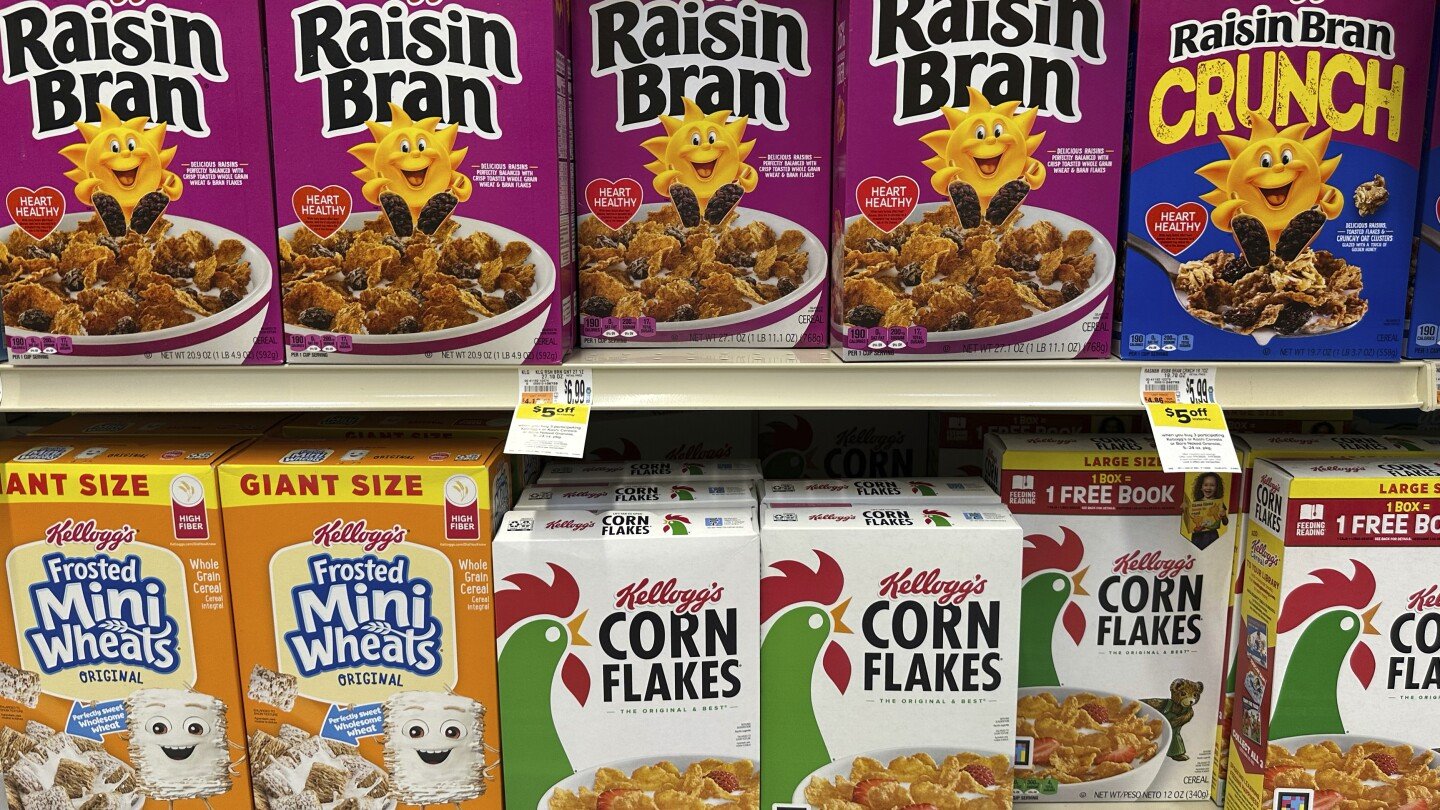
Breakfast cereal could use a lucky charm.
U.S. sales of the colorfully packaged morning staple have been in a decades-long decline, a trend back in the spotlight with news that Italian confectioner Ferrero Group plans to purchase WK Kellogg, maker of Corn Flakes, Froot Loops, Rice Krispies and other familiar brands.
Except for a brief period during the coronavirus pandemic, when many workers were home and had time to sit down with a bowl of cereal and milk, sales of cold cereal have steadily fallen for at least 25 years, experts say.
In the 52 weeks ending July 3, 2021, Americans bought nearly 2.5 billion boxes of cereal, according to market research company Nielsen IQ. In the same period this year, the number was down more than 13% to 2.1 billion.
Cereal has been struggling for multiple reasons. The rise of more portable options like Nutri-Grain bars and Clif Bars – which both went on sale in the early 1990s – made it easier for consumers to grab breakfast on the go.
Concerns about food processing and sugar intake have also dimmed some consumers’ enthusiasm for cereals. One cup of Lucky Charms contains 24% of a consumer’s daily recommended intake of sugar, for example.
“Cereal finds it really hard to get out from underneath that,” said Tom Rees, global insight manager for staple foods at the consulting company Euromonitor. “It can’t escape the fact that it doesn’t look like a natural food. You have to create it and form it.”
Rees noted that for decades, cereal manufacturers focused on adding vitamins and minerals to build cereal’s health credentials. But consumers now are looking for simplified ingredient lists.
Artificial dyes — like the petroleum-based colors that brighten Froot Loops — have also come under fire. Last fall, dozens of people rallied outside WK Kellogg’s Battle Creek, Michigan, headquarters demanding that it remove artificial dyes from its cereals. Kellogg and General Mills — another major U.S. cereal maker — have since pledged to phase out artificial dyes.
Add to that, consumers are expanding their idea of what breakfast can be. Yogurt and shakes have replaced the traditional bacon and eggs. Kenton Barello, a vice president at the market research firm YouGov, said his polling shows that Generation Z consumers, who were born between 1997 and 2007, eat more vegetables for breakfast than other generations.
Barello said YouGov’s polling also shows that members of Gen Z are less likely to eat breakfast but still buy ready-to-eat cereal, suggesting they’re eating it as a snack or for other meals.
“With younger generations, there are differences in their relationship with food and these eating moments,” Barello said. “They are going about breakfast in a different way than Millennials, Gen X and Baby Boomers.”
Cereal’s struggles are part of what led to the breakup of the Kellogg Company. In 2023, the century-old company that put Battle Creek, Michigan, on the map split into two companies. Kellanova took popular snack brands like Cheez-Its, Pringles and Pop-Tarts as well as international cereals, and WK Kellogg made cereals for the U.S., Canada and the Caribbean.
In 2024, M&M’s maker Mars Inc. announced a plan to buy Kellanova for more than $30 billion. That plan has cleared U.S. regulators but is still awaiting regulatory approval in Europe. WK Kellogg was left to try to rejuvenate the cereal business.
The sale of WK Kellogg to Ferrero doesn’t mean supermarket cereal aisles are at risk of extinction. Packaged food companies have options for turning around their soggy cereal sales, Rees said. He thinks Kellogg’s Mashups line, which mixed brands like Frosted Flakes and Froot Loops into one box, appeal to younger consumers, who tend to like interesting flavor combinations.
The market may also have a fragmented future, according to Rees. Companies may have to accept that younger buyers want a sweet-and-spicy cereal while older buyers might want a Keto-friendly option.
“The future might be realizing that the era of ‘This brand will serve everybody’ isn’t going to happen,” Rees said.
Julia Mills, a food analyst with the consulting company Mintel, thinks the shrinking population of children in the U.S. gives cereal makers the opportunity to shift to more sophisticated flavors and packaging. Cereal could be positioned as a fancy topping for yogurt, for example, or a fiber-rich food that can improve gut health.
Some niche cereal brands, like high-fiber Poop Like a Champion cereal and high-protein, zero-sugar Magic Spoon, are already doing that. But legacy brands say they shouldn’t be counted out.
Jeffrey Harmening, the chairman and chief executive officer of Cheerios maker General Mills, said his company considered trying to acquire Magic Spoon. Instead, it made high-protein versions of Cheerios, which now outsells Magic Spoon.
“The key to longer term is, honestly, is giving consumers more of what they want,” Harmening said during a conference call with investors in March.
Lifestyle
Trump administration sues California over egg prices and blames animal welfare laws
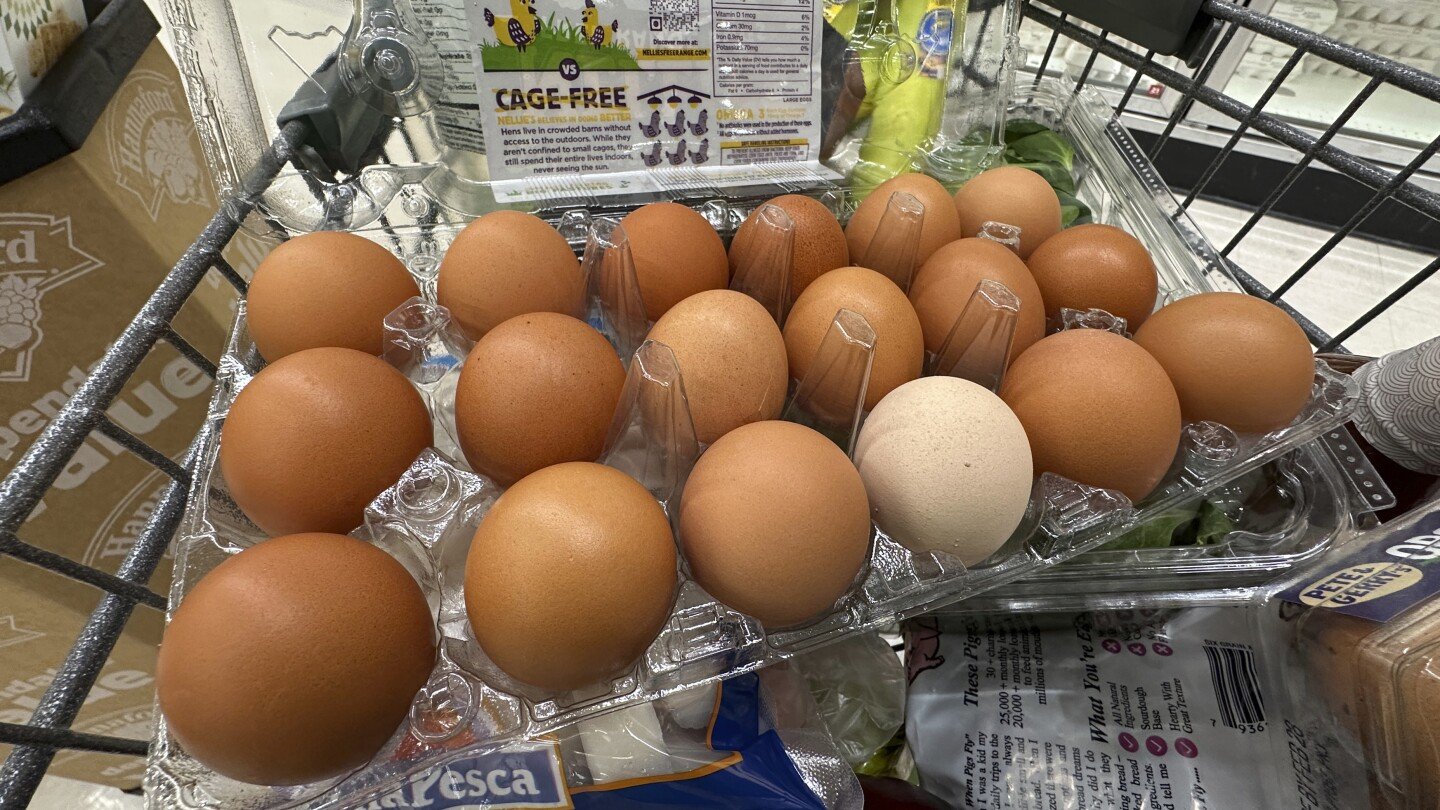
The Trump administration is suing the state of California to block animal welfare laws that it says unconstitutionally helped send egg prices soaring. But a group that spearheaded the requirements pushed back, blaming bird flu for the hit to consumers’ pocketbooks.
The lawsuit, filed in federal court in California on Wednesday, challenges voter initiatives that passed in 2018 and 2008. They require that all eggs sold in California come from cage-free hens.
The Trump administration says the law imposes burdensome red tape on the production of eggs and egg products across the country because of the state’s outsize role in the national economy.
“It is one thing if California passes laws that affects its own State, it is another when those laws affect other States in violation of the U.S. Constitution,” U.S. Agriculture Brooke Rollins said in a statement Thursday. “Thankfully, President Trump is standing up against this overreach.”
Egg prices soared last year and earlier this year due in large part to bird flu, which has forced producers to destroy nearly 175 million birds since early 2022. But prices have come down sharply recently. While the Trump administration claims credit for that, seasonal factors are also important. Avian influenza, which is spread by wild birds, tends to spike during the spring and fall migrations and drop in summer.
“Pointing fingers won’t change the fact that it is the President’s economic policies that have been destructive,” the California Department of Justice said in a statement Friday. “We’ll see him in court.”
The average national price for a dozen Grade A eggs declined to $5.12 in April and $4.55 in May after reaching a record $6.23 in March, according to the U.S. Bureau of Labor Statistics. But the May price was still 68.5% higher than a year earlier.
“Trump’s back to his favorite hobby: blaming California for literally everything,” Gov. Gavin Newsom’s office said in a social media post.
The federal complaint alleges that California contributed to the rise in egg prices with regulations that forced farmers across the country to adopt more expensive production practices. The lawsuit also asserts that it is the federal government’s legal prerogative to regulate egg production. So it seeks to permanently block enforcement of the California regulations that flowed from the two ballot measures.
“Americans across the country have suffered the consequences of liberal policies causing massive inflation for everyday items like eggs,” Attorney General Pam Bondi said in a statement. “Under President Trump’s leadership, we will use the full extent of federal law to ensure that American families are free from oppressive regulatory burdens and restore American prosperity.”
While 2018’s Proposition 12 also banned the sale of pork and veal in California from animals raised in cages that don’t meet minimum size requirements, the lawsuit only focuses on the state’s egg rules.
Humane World for Animals, which was named the Humane Society of the United States when it spearheaded the passage of Proposition 12, says avian influenza and other factors drove up egg prices, not animal welfare laws. And it says much of the U.S. egg industry went cage-free anyway because of demand from consumers who don’t want eggs from hens confined to tiny spaces.
“California has prohibited the sale of cruelly produced eggs for more than a decade — law that has been upheld by courts at every level, including the Supreme Court. Blaming 2025 egg prices on these established animal welfare standards shows that this case is about pure politics, not constitutional law,” Sara Amundson, president of the Humane World Action Fund, said in a statement.
The American Egg Board, which represents the industry, said Friday that it will monitor the progress of the lawsuit while continuing to comply with California’s laws, and that it appreciates Rollins’ efforts to support farmers in their fight against bird flu and to stabilize the egg supply.
“Egg farmers have been both responsive and responsible in meeting changing demand for cage-free eggs, while supporting all types of egg production, and continuing to provide options in the egg case for consumers,” the board said in a statement.
-
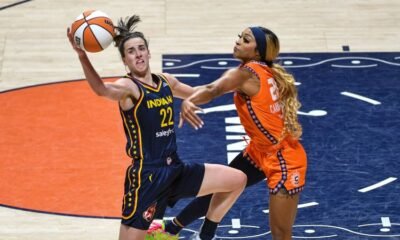
 Sports4 days ago
Sports4 days agoThe behind-the-scenes story of a WNBA controversy: Caitlin Clark, DiJonai Carrington and a journalist’s questions
-

 Europe3 days ago
Europe3 days agoTrump promised 200 deals by now. He’s gotten 3, and 1 more is getting very close
-

 Sports4 days ago
Sports4 days ago‘Keep pumping’: The new dance inspiring Novak Djokovic’s quest for a record-equaling Wimbledon title
-
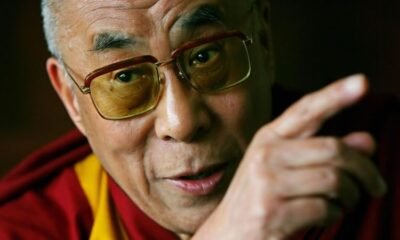
 Asia5 days ago
Asia5 days agoDalai Lama Fast Facts | CNN
-

 Sports4 days ago
Sports4 days agoTyrese Haliburton to miss entire 2025-26 NBA season to rehab torn Achilles tendon
-

 Europe3 days ago
Europe3 days agoExtreme heat is a killer. A recent heat wave shows how much more deadly its becoming as humans warm the world
-

 Africa4 days ago
Africa4 days agoCairo telecom fire injures 14, disrupts internet nationwide
-

 Europe4 days ago
Europe4 days agoHe was born to a US citizen soldier on an army base in Germany. Now he’s been deported to Jamaica, a country he’d never been to




